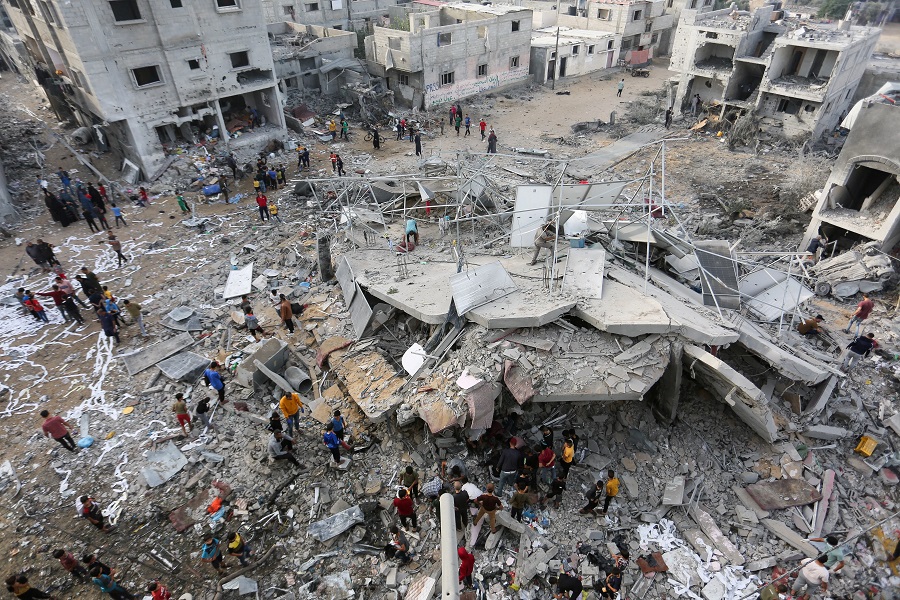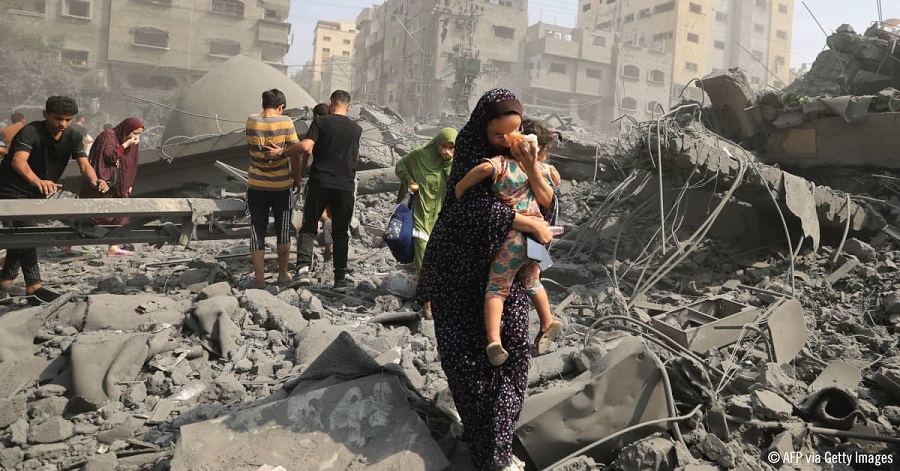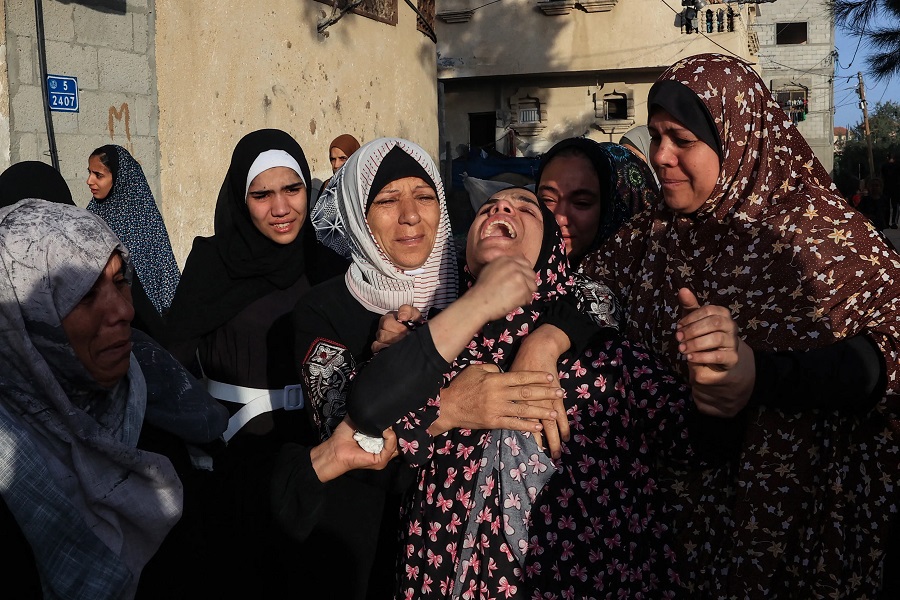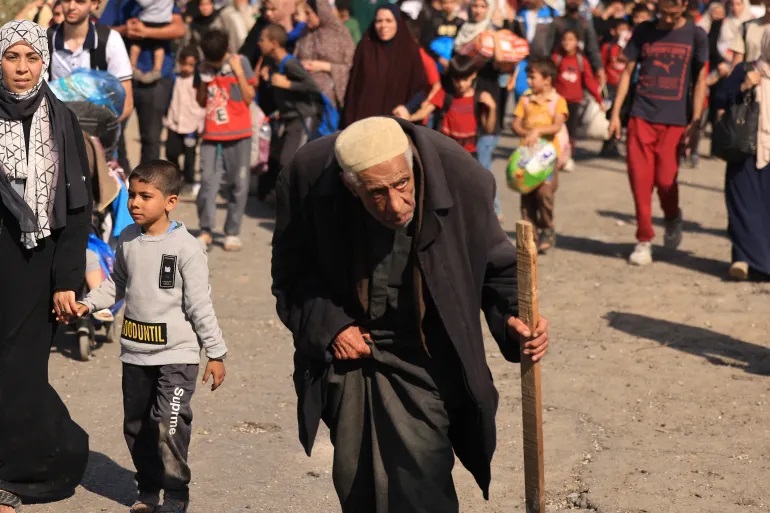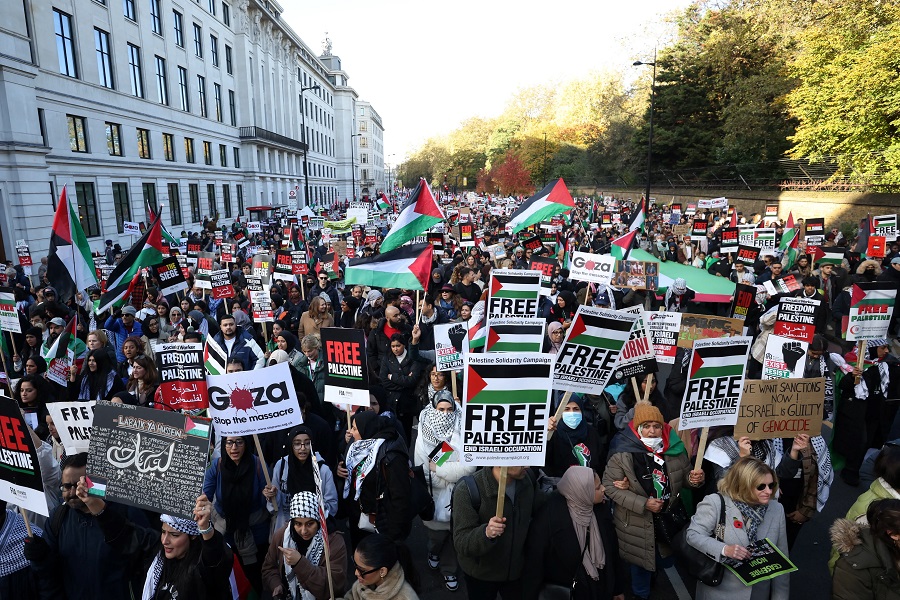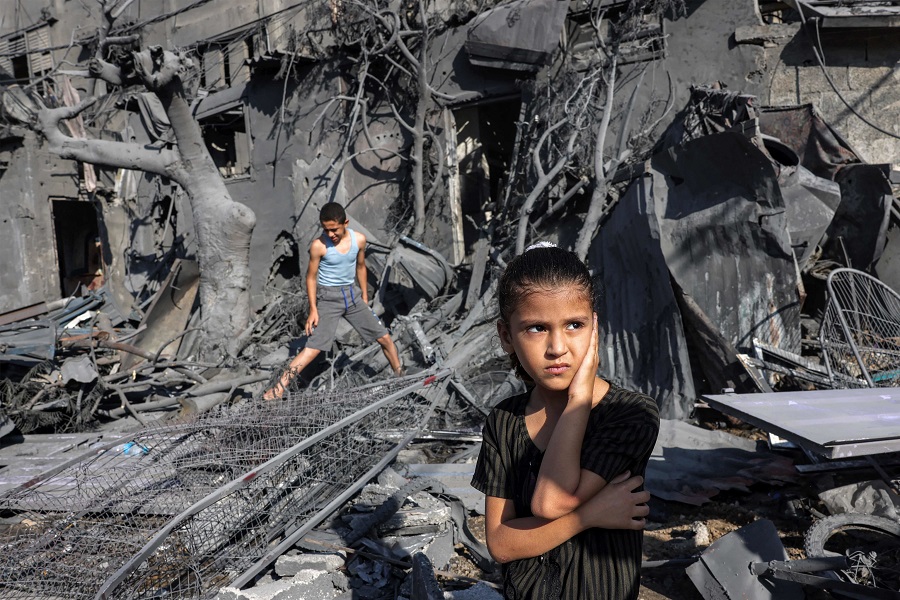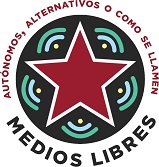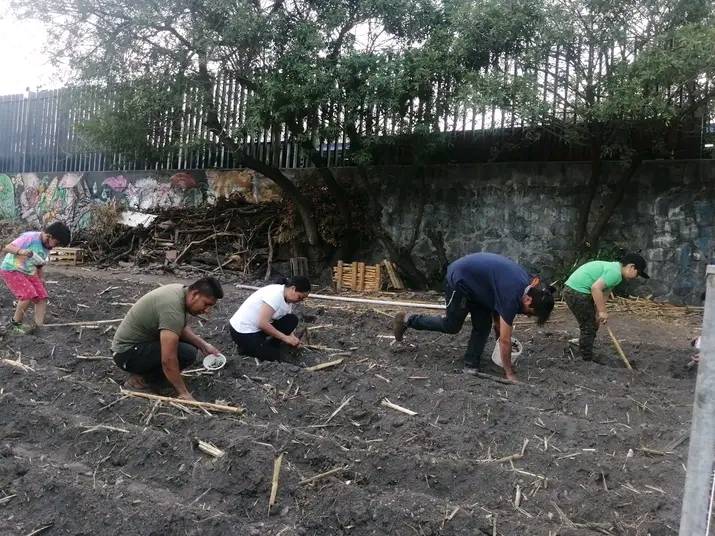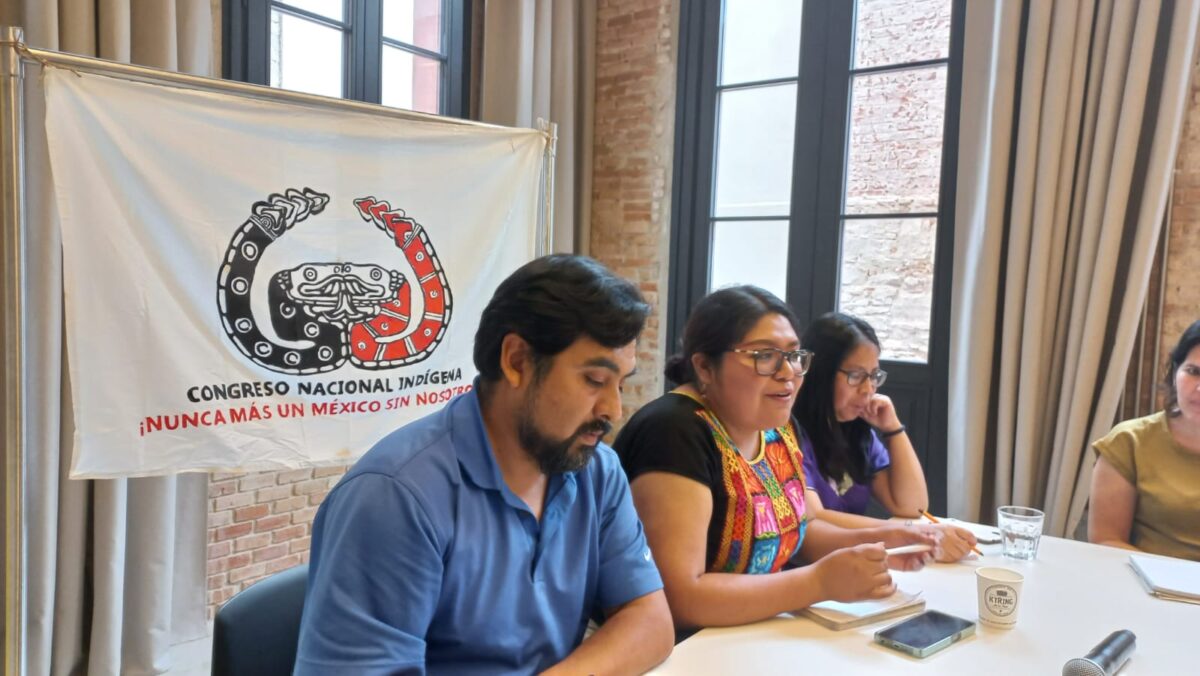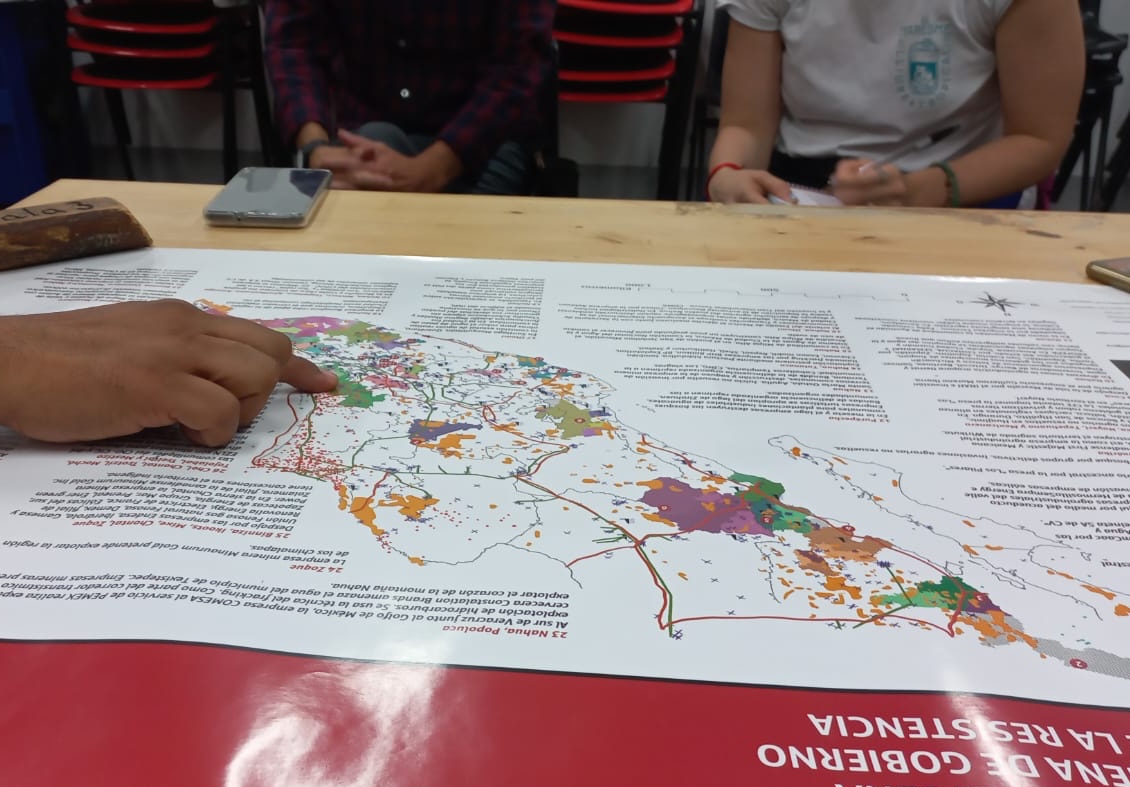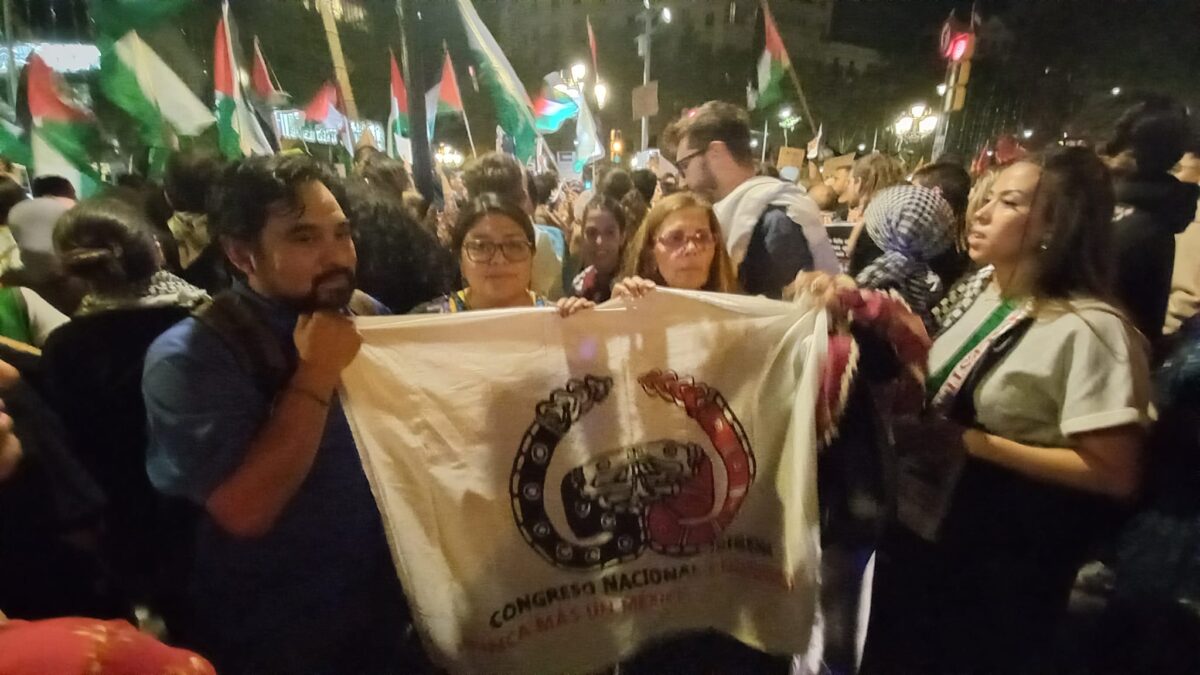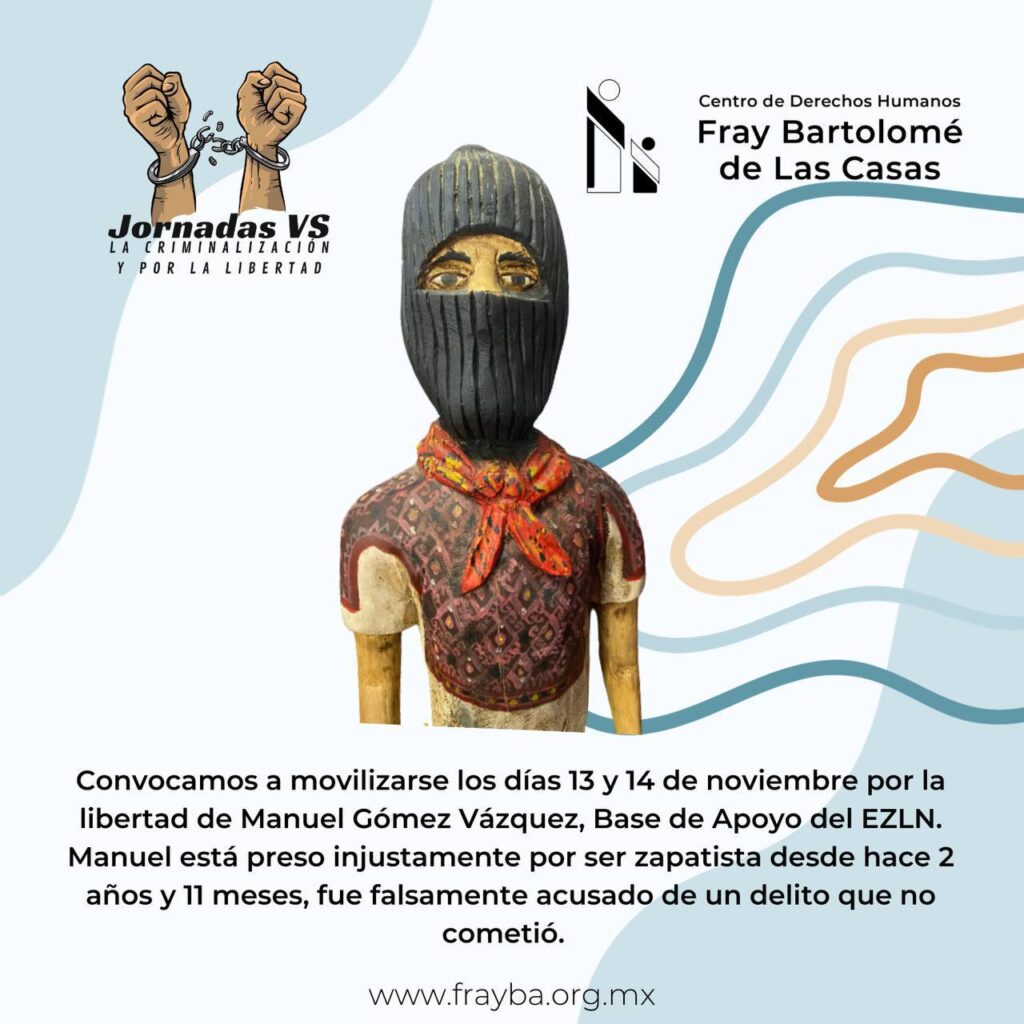
Author
EZLN | Ninth Part: The new structure of Zapastista Autonomy
Ninth Part: The new structure of Zapastista Autonomy
November 2023
Brothers, sisters, comrades:
I am going to try to explain to you how we reorganized the autonomy, that is, the new structure of the Zapatista autonomy. I will explain more to you later in more detail. Or maybe I won’t explain more, because practice is what matters. Of course you can also come to the anniversary and watch the plays, songs, poems and the art and culture of this new stage of our struggle. If not, Tercios Compas will send you photos and videos. At another time I will tell you what we saw good and bad in the critical evaluation of MAREZ and JBG. Now I’ll just tell you how it looks. Here it goes:
First: The main base, which is not only where autonomy is sustained, also without which the other structures cannot function, is the Local Autonomous Government, LAG [GAL for its acronym in Spanish]. There is a GAL in each community where Zapatista support bases live. The Zapatista GALs are the core of all autonomy. They are coordinated by autonomous agents and commissioners and are subject to the assembly of the town, ranchería, community, area, neighborhood, ejido, colony, or however each population calls itself. Each GAL controls its autonomous organizational resources (such as schools and clinics) and the relationship with neighboring non-Zapatista brother towns. And controls the proper use of the pay. It also detects and reports mismanagement, corruption and errors that may exist. And is attentive to those who want to pass themselves off as Zapatista authorities to ask for support or aid that they use for their own benefit.
So, if before there were a few dozen MAREZ, that is, Zapatista Rebel Autonomous Municipalities, now there are thousands of Zapatista GALs.
Second. – According to their needs, problems and advances, various GALs are convened into Collectives of Zapatista Autonomous Government, ZAG [CGAZ for its acronym in Spanish], and here discussions are held and agreements are made on matters that interest the convening GALs. When they so determine, the Collective of Autonomous Governments calls an assembly of the authorities of each community. Here the plans and needs of Health, Education, Agroecology, Justice, Commerce, and those that are needed are proposed, discussed and approved or rejected. The coordinators of each area are at the CGAZ level. They are not authorities. Their job is to ensure that the work requested by the GAL or that are deemed necessary for community life. Such as, for example: preventive medicine and vaccination campaigns, campaigns for endemic diseases, courses and specialized training (such as laboratory technicians, x rays, ultrasound, mammograms and those that we learn on the way), literacy and higher levels, sporting and cultural events, traditional festivities, etc. Each region or CGAZ has its directors, who are the ones who summon assemblies if there is an urgent problem or one that affects several communities.
That is to say, where before there were 12 Good Government ‘Juntas’, now there will be hundreds.
Third. – Next, the Assemblies of Collectives of ZAPATISTA Autonomous Governments, ACZAG [ACGAZ for its acronym in Spanish]. Which are what were previously known as zones. But they have no authority, and depend on the CGAZ. And the CGAZ depend on the GAL. The ACGAZ convenes and presides over zone assemblies, when necessary according to the requests of GAL and CGAZ. They are based in the caracoles, but move between regions. In other words, they are mobile, according to the towns demands for attention.
Fourth. – As will be seen in practice, the Command and Coordination of Autonomy has been transferred from the JBG and MAREZ to the towns and communities, to the GAL. The zones (ACGAZ) and the regions (CGAZ) are governed by the towns, they must be accountable to the towns and must find a way to meet their needs in Health, Education, Justice, Food and those that arise due to emergencies caused by natural disasters, pandemics, crimes, invasions, wars, and the other misfortunes that the capitalist system brings.
Fifth. – The structure and disposition of the EZLN has been reorganized in order to increase the defense and security of towns and mother earth in the event of aggressions, attacks, epidemics, invasion of companies that prey on nature, partial or total military occupations, natural catastrophes and nuclear wars. We have prepared so that our towns survive, even isolated from each other.
Sixth. – We understand that you may have problems assimilating this. And that, for a while, you will struggle to understand it. It took us 10 years to think about it, and of those 10 years, 3 to prepare it for its practice.
We also understand that it seems to you that your thinking is scrambled. That is why it is necessary to change your channel of understanding. Only by looking far away, backwards and forwards, can the present step be understood.
We hope you understand that it is a new structure of autonomy, that we are just learning and that it will take a while to get going well.
In reality, this statement has only the intention of telling you that Zapatista autonomy continues and advances, that we think it will be better for the towns, communities, places, neighborhoods, colonies, ejidos and rancherías where they live, that is, the bases of Zapatista support. And that it has been their decision, taking into account their ideas and proposals, their criticisms and self-criticisms.
Also, as will be seen, this new stage of autonomy is made to confront the worst of the Hydra, its most infamous bestiality and its destructive madness. Their wars and business and military invasions.
For us, there are no borders or distant geographies. Everything that happens in any corner of the planet affects us and concerns us, worries us and hurts us. To the extent of our very small strength, we will support human beings in distress regardless of their color, race, nationality, belief, ideology and language. Although we do not know many languages or understand many cultures and ways, we know how to understand the suffering, pain, sorrow, and proud rage that the system provokes.
We know how to read and listen to brother hearts. We will continue trying to learn from them, their stories and their struggles. Not only because we have suffered from this for centuries and we know what it is like. Also, and above all because, as for 30 years, our fight is for life.
Surely we have made many mistakes in all these years. We will surely do more in the next 120 years. But we will NOT give up, we will NOT change path, we will NOT sell out. We will always be reviewing our struggle, its times and ways with a critical eye.
Our eyes, our ears, our heads and our hearts will always be ready to learn from others who, although different in many things, have our same concerns and similar desires for democracy, freedom and justice.
And we will always seek the best for our people and for our sister communities.
We are, therefore, Zapatistas.
As long as there is at least one man, one woman, one ‘otroa’ Zapatista in any corner of the planet, we will resist in rebellion, that is, we will fight.
See it for yourselves, friends and enemies. And those who are neither one thing nor another.
That is it, for now.
From the mountains of the mexican southeast.
Insurgent Subcommander Moisés.
Mexico, November 2023.
More than 500, 40, 30, 20, 10 years later.
P.S.- Here I leave you a drawing to see if you understand it a little.

EZLN | Eighth Part: P.S. WHAT YOU HAVE TO READ TO KNOW WHAT IT’S ABOUT.
Eighth Part: P.S. WHAT YOU HAVE TO READ TO KNOW WHAT IT’S ABOUT.
Legend has it that, in the times when time did not matter, rain and night covered the House of Beings. Then the power went out. Everything was darkness. Women, men and ‘otroas’ were stumbling and crashing with each other. For this reason, they argued and fought between brothers and neighbors. They didn’t even recognize each other, even though they were family members and acquaintances, because it was very dark. They scolded each other a lot.
The first gods, those who created the world, were lazy, lying in their hammocks, telling jokes and stories. But all the noise coming from the House of Beings reached them. “Whose noise is this?” asked one. “Who knows,” said another. Ixmucané, who was the mother goddess, said: “Let’s see what the noise is about,” but when she got out of the hammock, she fell and her face landed on the ground and it looked like it was dented, that is, like it had cracks. Ixmucané got up from the ground and did not swear because swear words had not yet been invented. She dusted herself off. She raised her skirt a little and ran towards the House of Beings.
The gods looked at each other and said nothing, but they thought, “Are we going to let a woman beat us?” and they got down from their hammocks, but carefully, and ran to catch up with Ixmucané. But it turns out that, since they had been lazy, they had not made or cleared path and there was a lot of bush. Pure ‘Acahual’, you see. There was an abundance of tzaw ch’ix (thorns), dry branches, sharp grass (which is also called gezau h’ak) and ch’oox tz’an, which is a vine with thorns. But there they went running and jumping as best they could and complaining on the way, those gods, because they were not going to allow a woman to beat them. They later arrived at the House of Beings, all scratched and dented on their faces and hands. But no one looked at them and noticed that they were all beaten up, because there was no light. That is why it is believed that the gods do not have wounds.
The gods didn’t look at anything either. Everything was dark. Just by the sound you knew there were more people. “And now?” the gods asked themselves. Ixmucané did not wonder anything, but remained thinking. The male gods were always very boastful and began to say that you have to go for ocote. Another said that they had to invent the the lamp. Another one said that had to gather a lot of fireflies. And so.
Ixmucané thought: “We have to replace the light. But to replace it, we have to find it. And to find it, we have to know where to look for it. And to know where to look for it, we just have to know what happened.”
Ixmucané gathered the men, women and ‘otroas’ of corn. At that time there were only men, women and ‘otroas’ made out of corn, they came in many colors and everyone had their own way. There were no religions, no nations, no States, no political parties, nor everything that was born later as seeds of war. So, when Ixmucané said “come, little brothers and sisters,” guided by her voice, all the men and women arrived, and ‘othroas’ too – because they did not feel excluded.
So they met in an assembly. They didn’t look at each other because there was no light, but they could talk and listen to each other.
Ixmucané asked them “What are we going to do?” The men, women and ‘otroas’ did not look at each other – because there was no light – but remained silent. Until a voice said “Well, you tell us what we are going to do.” The applause was not seen, but it was clearly heard. Ixmucané laughed heartily and said, “Do you think I know. We don’t know as it is, but maybe gathered together, in an assembly and talking, suddenly some ideas emerge about what we are going to do.» They were all silent, wondering what they were going to do.
The only noise that could be heard was the noise of the male gods who were fighting among themselves, saying where the hell was the ‘ocote’, and whether someone had remembered to create the fireflies, and whether it was not me, and whether that was up to I don’t know who but he always plays dumb or acts like a duck, and someone asked what is a “duck”, because the ducks were not made yet. And so.
In the assembly they were already talking and proposing how to do it. First just a few voices, then more. Then they had to make a list in order to speak in turns and have someone write if there is an agreement. Since there was no light to write or read, there was only the spoken word, so they named Ixmucané, for her to keep in her head everything that is said, and then talks about it.
Many ideas and words were said, and they no longer fit in his Ixmucané head. Then she began to keep them in her hair and her hair became long, that’s why women have long hair. But then it wasn’t enough either, although she adjusted her hair and that’s when the “hair press” was invented, which, as its name indicates, means “grab ideas.” Ixmucané’s hair was already reaching the ground and they continued speaking ideas and words. Then Ixmucané began to keep her ideas in the wounds she had gotten when she fell and with the thorns and vines. She had wounds everywhere: on her face, on her arms, on her hands, on her legs. Her entire body was full of wounds, so she was able to save everything. That’s why they say that old people, that is, sensible people, who have many wrinkles and scars, means that they have many ideas and stories. That is to say they know a lot.
In another turn I will tell you what they agreed on in that first assembly that took place in the House of Beings, but in this one I will tell you what Ixmucané said: “Well, we already have, as it were, a plan to face this problem that we have. Since the world is just being born and we are giving a name to each thing, so as not to confuse ourselves, we are going to call this thing we did «in common», because we all participated: some giving some ideas, others proposing other ideas, and there are those who speak and there are those who keep notes of what is said.”
There was silence first. Heavy, strong was the silence. Then you could hear someone start to applaud, then another, then everyone applauded and you could hear that they were very happy. And they didn’t dance because you could see nothing at all. But they laughed a lot because they had found a new word called “in common,” which means “to seek the path together.” And it was not that the first gods invented it, those who created the world, but it came to be that it was men, women, and ‘otroas’ made of corn, who, in common, found the word, that is, the way.
-*-
Ixmucané was the most knowledgeable of all the gods and, as she was the first to arrive at the House of Beings, she had more wounds, from the fall and from the race she did in the ‘Acahual’, and thus she was marked with those scars. “Wrinkles” and “scars,” they were called. Since then, wrinkles and scars represent wisdom. More wrinkles and scars, more knowledge. Of course, back then there were no social networks and no one was wearing makeup and modifying their photos with a well-known virtual application. And then it happens that you see the profile photo and then you see reality, and you want to run away. No, the wrinkles and scars were a source of pride and not something anybody could have. Even young men and women painted wrinkles and scars, or simply went into the mountains so that the thorns and vines scratched their faces. Because it didn’t matter who was prettier, but rather who was more knowledgeable. Instead of “followers” and “likes” they looked for who had the most wrinkles and scars.
And that’s it.
-*-
Yes, I would also like to know what happened to the lost light. Maybe later, in another postscript, we will know. For now, we have to learn to walk and live like this in the dark. There is no other way.
From the mountains of the Mexican southeast.

The Captain
November 2023. 40, 30, 20, 10 years after.

